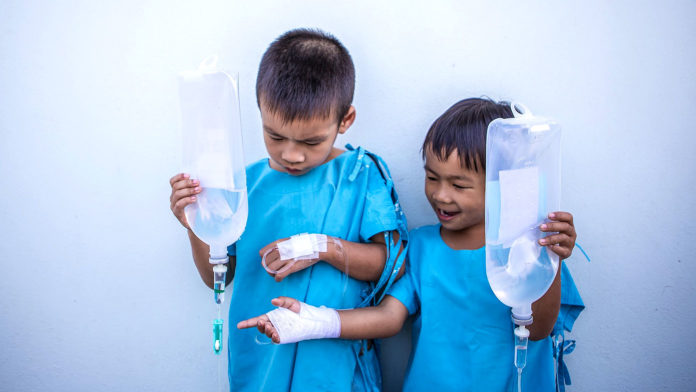Before truly entertaining the idea of personalized medicine, there’s another important known hurdle that has yet to be fully addressed: the inclusion of women and children in clinical trials.
Historically, to reduce complexity in the analysis of trial data, it has been convenient to be quite restrictive in terms of recruiting. This has led to rich data sets on white men, but a lack of data on everybody else.
Everything, from metabolism to hormones, varies from person to person; this is especially apparent when looking at data across sexes. There are even differences in organs across sexes.
Young children also have very different biology, making it unreliable to simply treat them as small adults. Drugs and medical devices simply behave differently.
To address the under-representation of women and children in clinical trials, the Women and Children’s Health Research Institute (WCHRI) at the University of Alberta is working to improve the mix of participants across age and sex.
Why are women and children under-represented in clinical trials?
The exact reason it is important to collect data from women and children is one of the reasons they are often excluded: their biology is different, which makes the data more complex to analyze. For instance, the optimal dosage or schedule may change significantly across groups.
Even within a single person, there can be wide fluctuations in hormone levels, which can add even more complexity. Menstrual cycles could have a significant effect on drugs or devices being tested.
Beyond that, there are ethical arguments: can children truly consent to participate in clinical trials? Are there special risks involved for women who are pregnant, or may become pregnant during the trial?
Then there are questions of enrollment. To be able to segregate and analyze data from women and children as a separate group, there needs to be enough of them in the trial. For instance, men are more likely to have lung cancer and cardiovascular disease, making them easier to recruit, but these same diseases tend to be more serious and life-threatening in women.
How does diversity in clinical trials lead to healthier communities?
Francoise Baylis, professor of bioethics and philosophy at Dalhousie University, acknowledges the challenges: the potential for higher costs, bigger clinical trial sizes, and even increased liability. But he also notes that including women and children is important, because women and children still take medicine when they are sick. Even pregnant women. And especially now as the average age of new mothers is on the rise. Not having the data to support drug safety and efficacy in every population leaves patients vulnerable.
Sandra Davidge, executive director of WCHRI, believes that the benefits extend into communities in general. Healthier women generally means healthier pregnancies and children. Healthier children set the stage for better health in the long term, reducing the overall burden of chronic diseases, says Davidge.
The fact that more diverse clinical trials presents more challenges doesn’t ease the ethical burden of inclusion. To ensure studies prove that medical treatments work safely on the people they will be prescribed to, they should include women and children.








































